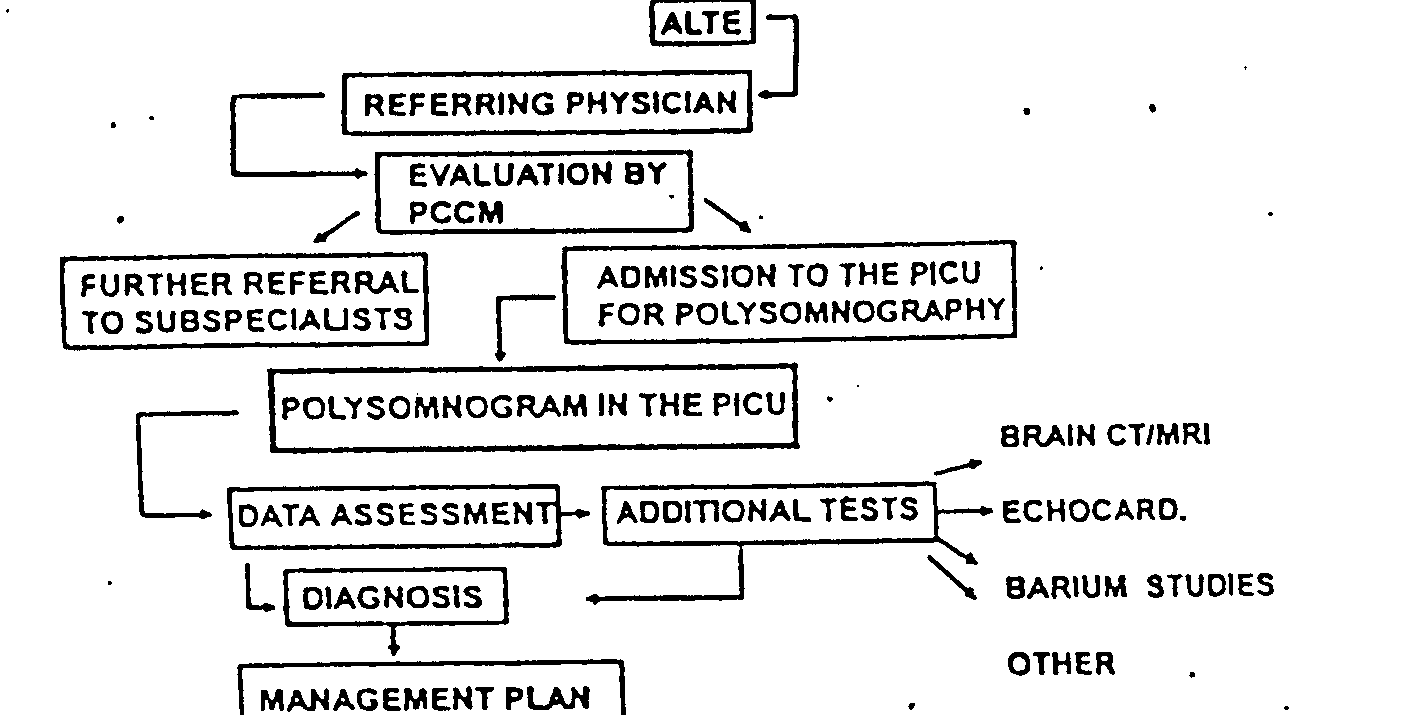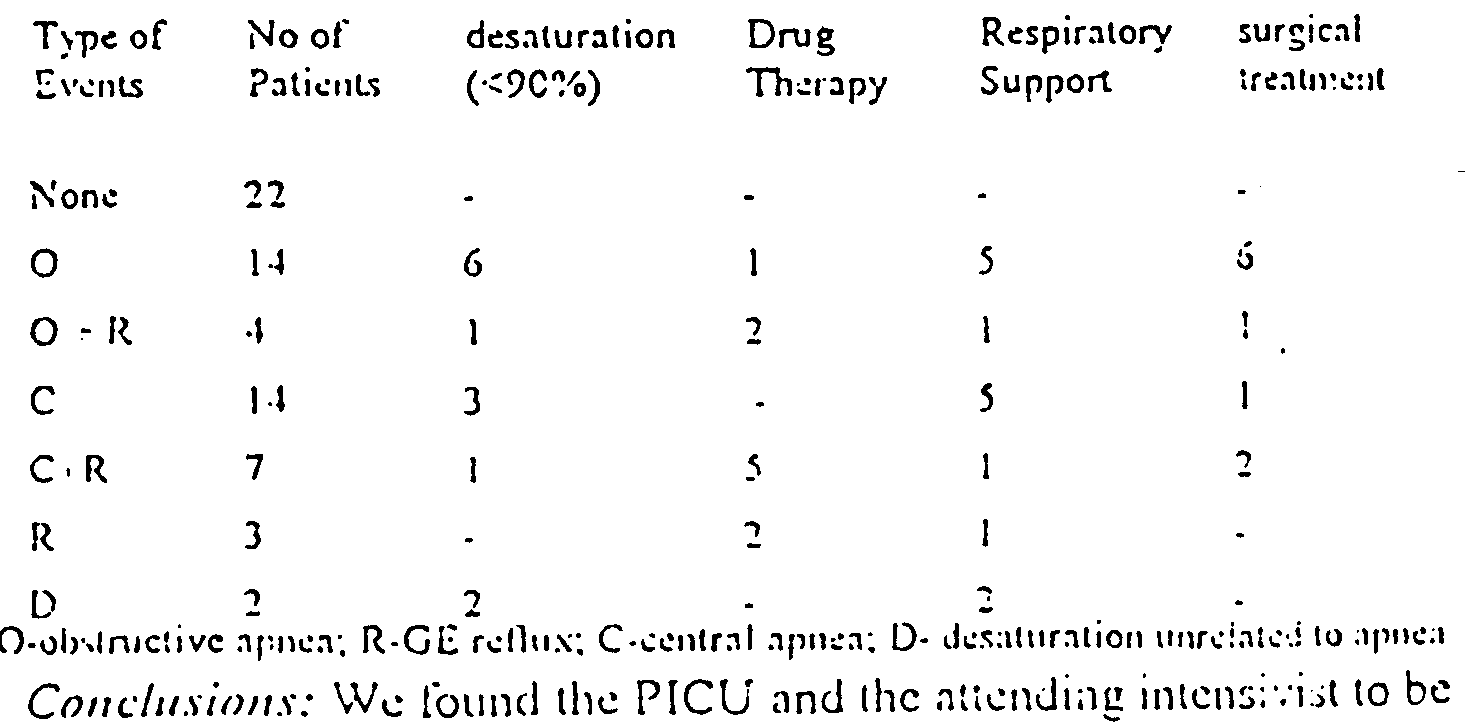

| 11 th Annual Pediatric Critical Care Colloquium |
| Session/Time | Poster/Thu, 4:30 - 6:30 PM |
| Title | The Pediatric Intensive Care Unit as aft Efficient Hub For Diagnosis and Management of Acute Life Threatening Events (ALTE) |
| Author | K Bock, M Rom, L Pierre, P Silver, T Furuno, M Sagy |
| Affiliation | Schneider Children's Hospital, New Hyde Park, New York |
| Introduction | Patients with ALTE are often admitted to the hospital and receive a fragmented diagnostic evaluation by various disciplines. As of 1996, a program centralized in our Division of Critical Care Medicine has been established, utilizing an organized diagnostic and management algorithm for ALTE (figure). A retrospective analysis of the usefulness of our PICU based ALTE diagnostic and management algoridm |
| Method | Sixty six patients, ages
ranging from 16 days to to 27 years (4 y ± S y), were referred to our Division. In 28
patients (42%) a basic polysomnogram was performed, in 27 (4 1 %) a pH probe was added and
in II (I 7%) EEG monitoring was also incorporated in the study. The time elapsed from the
initial clinical evaluation of patients by pediatric critical car-e medicine (PCCM) to
completion of p lyso=ogram analysis and initiation of treatment, ranged from 24 hours to
72 hours. 33 (50%) patients received treatment (table). Drug ierapy included caffeine in 3
patients, cisapride and or rar tidine in 8 and weight reduction in 2. The surgical therapy
included tonsillectomy and adenoidectomy in 4. tracheostomy in 4 and Nissen fundoplication
in 2. Respiratory support included nasal cannula oxygen in I 1, CPAP in I and BIPAP in 2.
10 patients were discharged on home monitoring. Ten patients (I 5%) were electively
readmitted to the PICU for repeat studies and in 2 patients dose adjustment of their
treatment Nvas necessary.
|
| Result | Sixty six patients, ages ranging from 16 days to to 27 years (4 y ± 5 y), were referred to our Division. In 28 patients (42%) a basic polysomnograrn was performed, in 27 (4 1 %) a pH probe was added and in II (I 7%) EEG monitoring was also incorporated in the study. The time elapsed from the initial clinical evaluation of patients by pediatric critical care medicine (PCCM) to completion of polysomnogram analysis and initiation of treatment, ranged aom 24 hours to 72 hours. 33 (50%) patients received treatment (table). Drug Uierapy included caffeine in 3 patients, cisapride and or ranitidine in 8 and weight reduction in 2. The surgical therapy Included tonsillectomy and adenoidectomy in 4, tracheostomy in 4 and Nissen fundoplication in 2. Respiratory support included nasal cumula oxygen in I 1, CPAP in I and BIPA.P in 2. 10 patients Nyere dischargedonhomemoniton'ng. Ten patients(15%) were electively readmitted to the PICU for repeat studies and in 2 patients dose adjustment of their treatment was necessary. |
| Conclusion |  |
| We found the PICU and the attending intensivist to be an efficient hub for ALTE investigation and management. Our algorithm has been utilized in 66 patients within a 2 year period and and treatment was successfully implemented in 33 patients within 72. |
Use your browser's back button to return to the appropriate index of abstracts...
Back to PCCC 98 Abstract Introduction | Back to PCCC 1998
Document created April 12, 1999